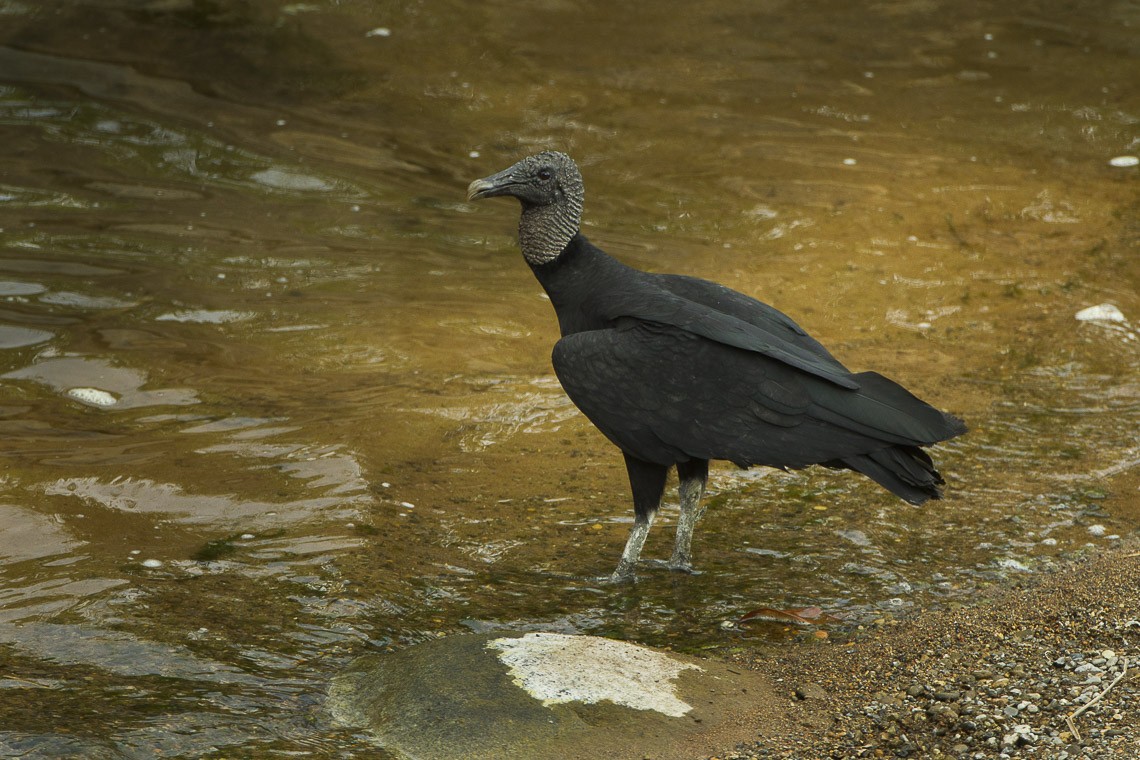Black Vulture
A species of American Black Vultures, Also known as Charleston Buzzard, Black Buzzard, Buzzard Scientific name : Coragyps atratus Genus : American Black Vultures
Black Vulture, A species of American Black Vultures
Also known as:
Charleston Buzzard, Black Buzzard, Buzzard
Botanical name: Coragyps atratus
Genus: American Black Vultures
Content
Description People often ask General Info
 Photo By Francesco Veronesi , used under CC-BY-SA-2.0 /Cropped and compressed from original
Photo By Francesco Veronesi , used under CC-BY-SA-2.0 /Cropped and compressed from original Description
Although quite dapper in appearance, the black Vulture's name comes from the Latin vulturus meaning “tearer" and that is just what that hooked beak is for. These birds are highly social, with fierce family loyalty and will share food with relatives and with their young long after the babies have fledged. Because they lack a voice box, their calls are limited to grunts and hisses.
Size
58 - 69 cm
Life Expectancy
16 years
Nest Placement
Cliff
Clutch Size
1 - 3 eggs
Incubation Period
1 brood
Number of Broods
38 - 39 days
Nestling Period
70 - 98 days
Feeding Habits
Black Vulture, a carrion specialist, often soars to locate carcasses or follows Turkey Vultures to feed. While predominantly consuming dead animals like hogs, cattle, and raccoons, black Vulture also eats fish, small live prey (including piglets and calves), and human refuse in landfills or dumpsters, adapting to natural and urban environments.
Habitat
Black Vulture seeks open to semi-open zones and adapts to human-altered landscapes, flourishing in diverse terrains such as lowland forests, shrublands, and grasslands, primarily at low elevations. Their range covers the regions from the eastern and southern US through to South America. They favor nesting in dense woodlands and roost in towering trees, often near water and uplift-generating landscapes.
Nest Behavior
Nesting pairs often return to prior successful sites yearly. Black Vulture lay their eggs directly on the ground within these chosen cavities. After laying, they demonstrate strong parental investment in incubating the eggs and raising the young, although specific timings and number of broods per year can vary.
Nest Characteristics
Black Vulture typically select dark and sheltered sites for nesting, such as caves, hollow trees, abandoned structures, or dense cover like brush piles and thickets. Their nests lack a constructed structure, consisting merely of a bare substrate without additional materials.
Dite type
Scavenger
People often ask
General Info
Feeding Habits
Bird food type
Sounds
Call
Recording location: Venezuela
Behavior
Black Vulture exhibit monogamous relationships and maintain enduring family bonds. These birds engage in daily communal roosting, forming flocks where information about food sources is exchanged. Within these gatherings, black Vulture establish foraging groups and adults reunite with their offspring, assisting them with food for months post-fledging. They employ aggressive tactics to protect food sources and roosting spaces from non-family members. Black Vulture's behavior at carcasses is hierarchical, often yielding to larger scavengers.
Distribution Area
The black vulture has a Nearctic and Neotropic distribution. Its range includes the mid-Atlantic States, the southernmost regions of the Midwestern United States, the southern United States, Mexico, Central America and most of South America. In South America, its range stretches to Peru, central Chile and Uruguay. It also is found as a vagrant on the islands of the Caribbean. 
Species Status
Not globally threatened.
Scientific Classification
Phylum
Chordates Class
Birds Family
New world vulture Genus
American Black Vultures Species
Black Vulture